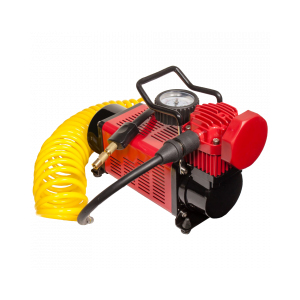heat resistant o rings
Understanding Heat Resistant O-Rings Essential Components for High-Temperature Applications
O-rings are crucial components in various engineering and industrial applications. Their primary function is to provide a reliable seal between two surfaces, preventing the leakage of fluids or gases. Among the different types of O-rings available in the market, heat-resistant O-rings are particularly vital for applications that operate under high-temperature conditions. This article explores the significance, materials, applications, and benefits of heat-resistant O-rings.
Importance of Heat Resistant O-Rings
Heat-resistant O-rings are designed to maintain their sealing integrity under elevated temperatures. Standard O-rings can deform or degrade when exposed to high heat, leading to potential leakage and failure of the system in which they are installed. Heat-resistant O-rings, typically made from specialized materials, can withstand the thermal stress and continue to perform effectively in challenging environments. Their durability is essential for applications in automotive, aerospace, oil and gas, and chemical processing industries, where consistent performance is critical.
Materials Used in Heat Resistant O-Rings
The material of the O-ring plays a significant role in determining its heat resistance. Commonly used materials for heat-resistant O-rings include
1. Fluoroelastomer (Viton) Known for its excellent thermal stability and chemical resistance, Viton O-rings can withstand temperatures up to 200°C (392°F) without losing their sealing properties. This makes them suitable for high-temperature applications in the automotive and chemical industries.
2. Silicone Silicone O-rings are another common choice for high-temperature applications. They can operate at temperatures ranging from -60°C to 230°C (-76°F to 446°F). Silicone is particularly effective in applications involving food processing and pharmaceuticals due to its non-toxic nature.
3. PTFE (Teflon) While PTFE O-rings are not elastomers, they are included for their exceptional temperature resistance and low friction properties. They can handle continuous temperatures up to 260°C (500°F) and are often used in scenarios involving aggressive chemicals and harsh environments.
4. Polyurethane This material is known for its abrasion resistance and is capable of operating at elevated temperatures ranging from -30°C to 90°C (-22°F to 194°F). Polyurethane O-rings are often used in hydraulic applications.
Applications of Heat Resistant O-Rings
Due to their outstanding performance in high-temperature environments, heat-resistant O-rings are extensively employed across various industries
heat resistant o rings

- Automotive Used in engine gaskets, fuel systems, and turbocharger applications, heat-resistant O-rings help maintain the integrity of seals even as temperatures fluctuate.
- Aerospace In aircraft engines and hydraulic systems, these O-rings play a critical role in ensuring reliable performance and safety, especially under extreme operational conditions.
- Oil and Gas Heat-resistant O-rings are essential for downhole applications where high temperatures and pressures are prevalent. They protect equipment from leaks and failures in drilling and extraction processes.
- Chemical Processing Many chemical processes involve high temperatures and aggressive fluids. Heat-resistant O-rings ensure that seals remain tight, thereby preventing leaks that could lead to hazardous situations.
Benefits of Using Heat Resistant O-Rings
The benefits of utilizing heat-resistant O-rings include
1. Reliability They provide assurance against leaks and failures, even in extreme conditions, thereby enhancing the overall safety of the systems they are used in.
2. Longevity Designed to withstand harsh temperatures, these O-rings have a longer lifespan, reducing the need for frequent replacements and maintenance.
3. Cost-Effectiveness By preventing leaks and system failures, heat-resistant O-rings can help avoid costly downtime and repairs.
4. Versatility Available in various materials tailored for specific high-temperature applications, manufacturers can select the most suitable O-ring for their needs.
In conclusion, heat-resistant O-rings are indispensable in high-temperature applications across various industries. Their ability to maintain integrity under extreme conditions ensures safety, reliability, and efficiency in systems where they are employed. The selection of the right material is critical, and understanding the unique properties of these O-rings empowers engineers and manufacturers to make informed decisions, ultimately contributing to the success of their projects.
-
Understanding the Front Main Engine Seal: Purpose, Maintenance, and Installation
News Jul.29,2025
-
Understanding O-Rings and Seal Rings: Types, Applications, and Custom Solutions
News Jul.29,2025
-
Understanding Crankshaft Oil Seals: Rear Seals, Pulley Seals, and Their Role in Engine Integrity
News Jul.29,2025
-
The Importance of Front and Rear Crankshaft Seals in Engine Performance and Oil Management
News Jul.29,2025
-
Crank Oil Seals: Functions, Types, and Cost Considerations in Engine Maintenance
News Jul.29,2025
-
A Comprehensive Guide to O-Rings and Seals: Types, Materials, and Global Applications
News Jul.29,2025
-
Mastering Diesel and Performance Engine Maintenance: A Guide to Critical Oil Gaskets
News Jul.28,2025
Products categories















